Lesson10 vSphere 管理特性
Lesson10 vSphere 管理特性
1-使用Alarms
The first tool vCenter Server provides is its alarms mechanism.
The administrator can create alarms for virtual machines, hosts,
networks, and datastores based on predefined triggers(预先定
义的触发器) provided with vCenter Server. Depending upon the
object, these alarms can monitor resource consumption or the
state of the object and alert the administrator when certain
conditions have been met, such as high resource usage or even
low resource usage. These alarms can then provide an action
(提供一个行为)that informs the administrator of the condition by
email or SNMP trap(发送邮件和SNMP通告). An action can
also automatically run a script(运行脚本) or provide other
means to correct the problem the virtual machine or host might be
experiencing.
可以预先定义告警然后采取些action
它有系统自己定义的告警(default Alarms)
These default alarms are usually generic in nature. Some of
the predefined alarms include alarms to alert the administrator
if any of the following happen:
1. A host’s storage status, CPU status, voltage, temperature, or
power status changes
(主机存储状态,CPU状态,电压,温度或者电源状态改变)
2. A cluster experiences a VMware High Availability (HA) error
(集群经历高可用性错误)
3. A datastore runs low on free disk space
(数据存储闲置空间低)
4. A virtual machine’s CPU usage, memory usage, disk latency,
or even fault tolerance status changes
(虚拟机CPU利用率,内存利用率,磁盘延时,容错状态改变)
When you define an alarm on an object, that alarm applies to all
objects beneath that object in the vCenter Server hierarchy.(当你定义
一个告警在一个目标,这个告警会被运用到这个目标层次以下的所有目标)具有可继承性
Alarms are also associated with specific types of objects(有些告警和特
殊类型的object有关). For example, some alarms apply only to virtual
machines, while other alarms apply only to ESX/ESXi hosts.(有些只能运用
到VM,有些只能运用到Hosts)
1-1创建告警
创建告警前需要考虑的问题
First, is there an existing alarm that already handles
this task for you?
(第一,是否存在告警已经能够处理相同的任务)
Second, if you’re going to create a new alarm, where
is the appropriate place within vCenter Server to
create that alarm?
(第二,如何选择vCenter适当位置来创建告警)
注意:Alarm技术必须使用vCenter!
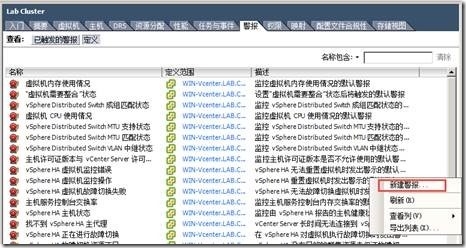
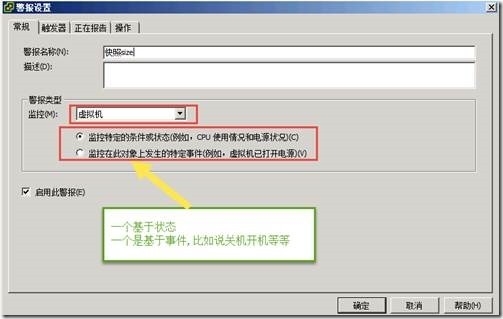
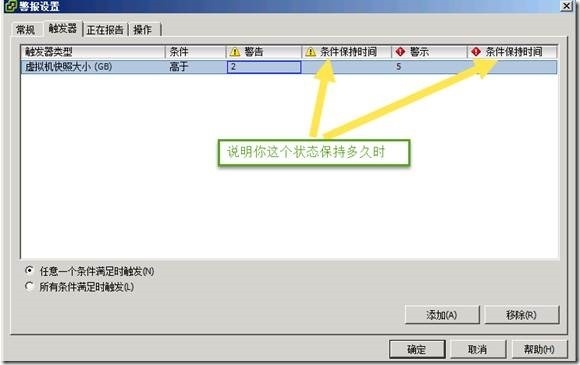
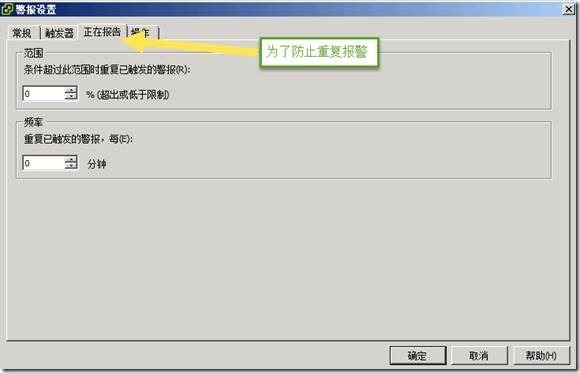
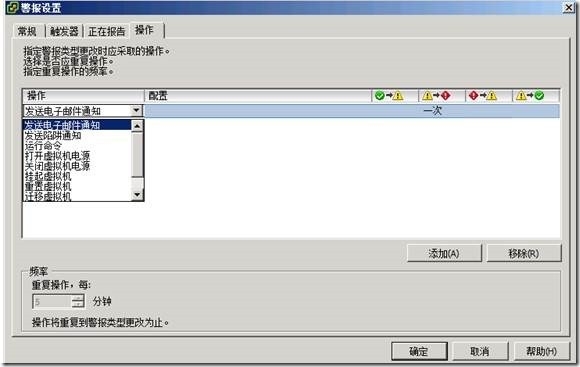
如果你要发送邮件通知的话,你需要在Vcenter上设置邮件
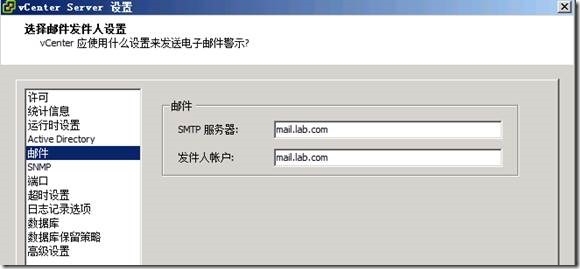
2-察看性能
我们可以基于集群看到一个summary

在不同的级别上可以看到不同的信息


2-1定义自己的一张性能表(最后基于一个host)

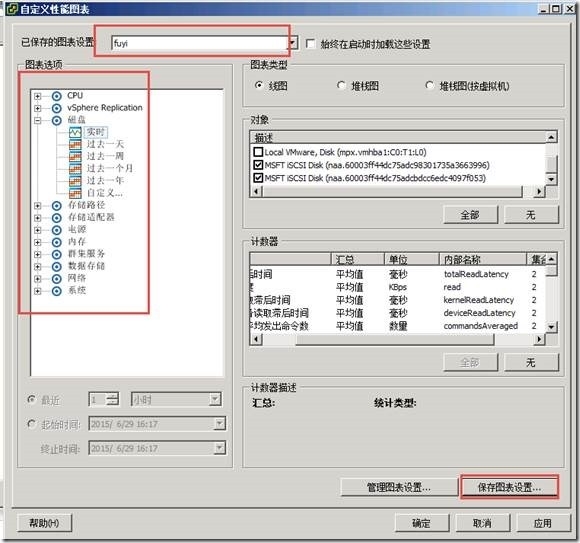
3-Scheduled Task
vCenter Server supports quite a list of tasks you can schedule to run
automatically:
1.Change the power state of a VM.(修改虚拟机电源状态)
2.Clone a VM.(克隆虚拟机)
3.Deploy a VM from a template. (从一个模版部署虚拟机)
4.Move a VM with vMotion. (使用vMotion技术在线迁移一个虚拟机)
5.Move a VM’s virtual disks with Storage vMotion. (在线迁移虚拟机磁盘)
6.Create a VM. (创建一个虚拟机)
7.Make a snapshot of a VM. (为虚拟机制作一个快照)
8.Add a host. (添加一个主机)
9.Change the power settings for a cluster. (修改集群电源状态)
10.Change resource settings for a resource pool or VM. (修改资源设置)
11.Check compliance for a profile. (检查host profile的顺从性)
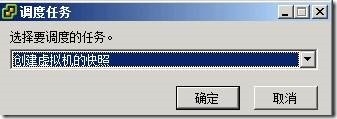
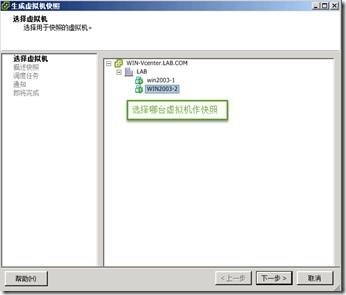
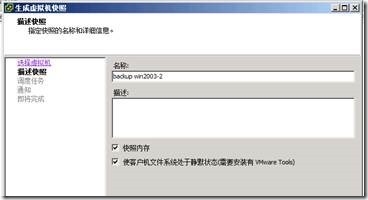
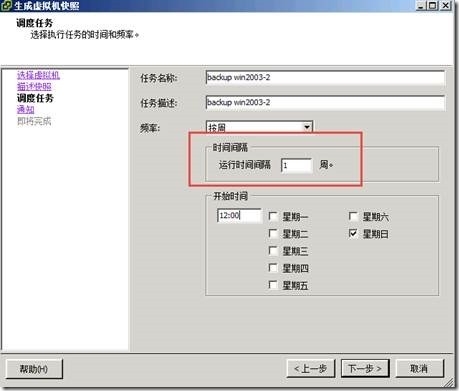
4-Events
The Events view in vCenter Server brings together all the events that have been logged by vCenter Server.


5-Maps
The Maps feature of vCenter Server is a great tool for quickly reviewing your virtual infrastructure(快速的查看虚拟架构). Topology maps graphically represent the relationship
that exists between different types of objects in the virtual infrastructure(图形化的表现不同类型组件之间的关系). The maps can display any of the following relationships:
1.Host to VM
2.Host to network
3.Host to datastore
4.VM to network
5.VM to datastore
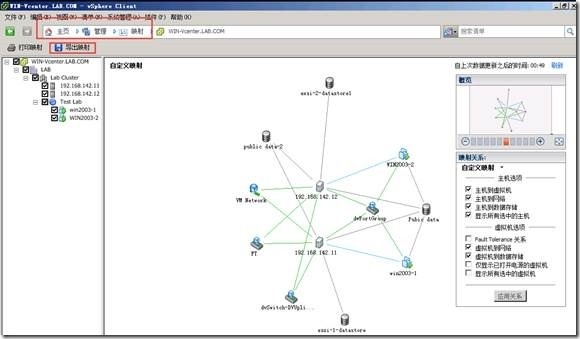
6-Host Profile
A host profile is essentially a collection of all the various configuration settings for an ESXi host. This includes settings such as NIC assignments, virtual switches, storage configuration, date and time, and more. (HostProfile收集ESXi主机的各种配置信息)By attaching a host profile to an ESXi host, you can then compare the compliance of that host with the settings outlined in the host profile(附着一个Profile到一个主机,比较是否顺从). If the host is compliant, then you know its settings are the same as the settings in the host profile. If the host is not compliant, then you can enforce the settings in the host profile to make it compliant. This provides administrators with a way not only to verify consistent settings across ESXi hosts but also to quickly and easily apply settings to new ESXi hosts.(检查ESXi配置的一致性,和快速轻松的部署新的ESXi主机).
它是针对host的,且HOST要进入维护模式
6-1创建一个host profile
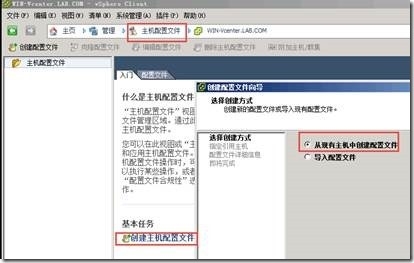
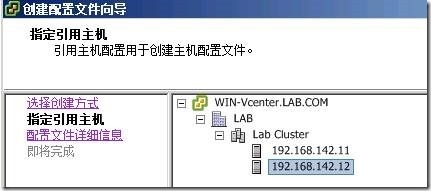
6-2把host profile附加到一个主机


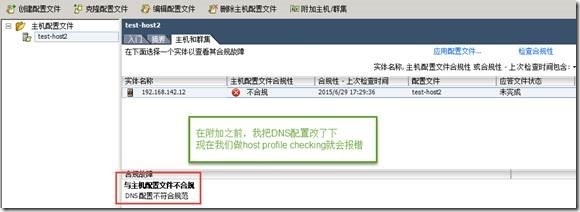
我们可以应用以前保存的host profile使其配置还原
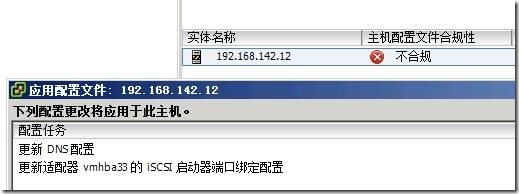
7-VM Storage Profile
两个属性
Storage Capability:指存储设备提供给存储的一系列特征:如 容量,性能,可用性等。
system-defined storage : 存储系统具有VASA(vSphere Storage APIs for Storage Awareness)功能,随着存储系统自动生成。(一般来说需要第三方的支持)
user-defined storage : 用户手动给存储指定存储特征。(如果第三方不支持,可以手工指定)
VM storage profile :定义了虚拟机所需求的存储能力性能。管理员可以根据虚拟机文件或虚拟磁盘不同的存储需求给它们指定不同的VM storage profile。在将VM storage profile指定给VM之
后,VM storage profile将执行顺从性检查以确认虚拟机或者虚拟磁盘所使用的存储是否符合在VM storage profile中所定义的存储性能特征。
7-1自定义storage capability
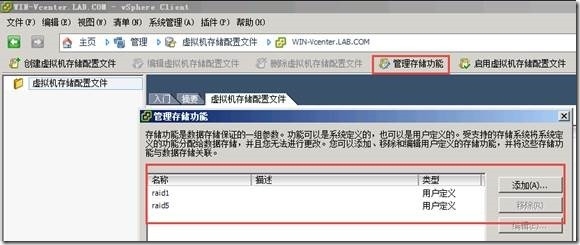
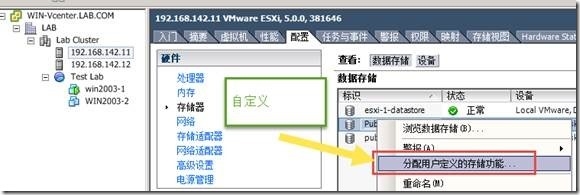
我们暂时指定这个存储的存储能力为raid 1

7-2启用VM storage profile
创建新的虚拟机配置文件



最后启动虚拟机配置文件

用虚拟机调用存储配置文件
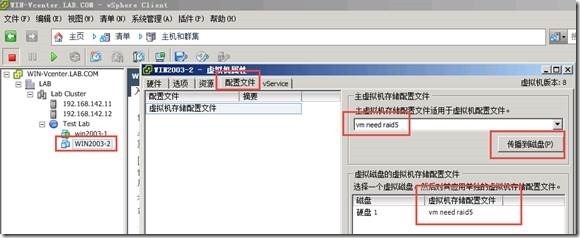


本文出自 “Erick WAY” 博客,谢绝转载!